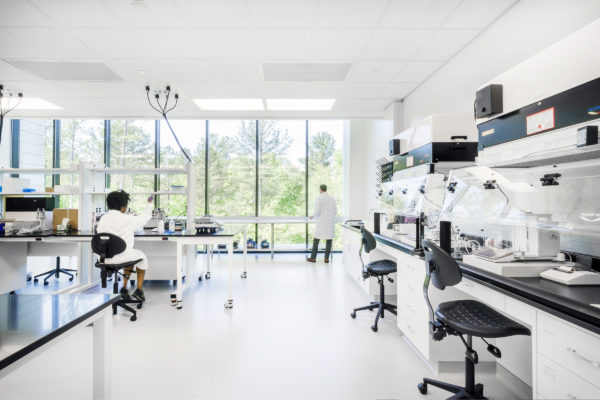
Designing a laboratory is more than just selecting equipment and deciding where it should go. It’s about creating a space that supports efficiency, safety, and long-term functionality. If you’ve ever wondered how to optimise your lab design, you’re not alone. Many professionals face challenges in ensuring their labs meet the highest standards. Here’s how you can achieve that.
Prioritise Safety in Every Aspect of Your Lab Design
Safety should be the cornerstone of any laboratory design. A well-designed lab reduces the risk of accidents, protects personnel, and ensures compliance with regulations. Start by incorporating safety features such as chemical storage cabinets, proper ventilation systems, and emergency exits. It’s essential to consider the type of work being conducted in the lab and tailor safety measures accordingly. For example, a lab handling hazardous chemicals will require different safety features than a biology lab focusing on specimen analysis. Additionally, ensure that your lab design allows for clear visibility across the workspace, enabling staff to monitor each other and respond quickly to any incidents.
Focus on Flexibility to Adapt to Changing Needs
Laboratories must evolve over time to accommodate new technologies, procedures, and research priorities. Designing with flexibility in mind will save time and money in the long run. Consider modular furniture and equipment that can be easily reconfigured or relocated. This adaptability allows your lab to change as your research demands without requiring significant renovations. For instance, incorporating adjustable shelving, movable workstations, and versatile storage options can help you quickly adapt your lab to new projects or different team sizes. A flexible lab design is crucial in dynamic fields where research needs can shift rapidly.

Maximise Space Utilisation for Efficiency
Effective space utilisation is vital in laboratory design, especially in environments where space is limited. Every square metre should serve a purpose, whether it’s for workstations, storage, or specialised equipment. Begin by mapping out your lab’s layout, identifying areas that can be optimised. Vertical space is often underutilised; installing shelves or cabinets can free up valuable floor space. Additionally, consider the workflow of the lab—how personnel move through the space and interact with equipment. A well-thought-out design will minimise unnecessary movement and enhance productivity. Proper space planning ensures that all essential areas are easily accessible, reducing the risk of bottlenecks and improving overall efficiency.
Integrate Advanced Technology to Boost Productivity
Incorporating the latest technology into your lab design can significantly enhance productivity and precision. Automated systems, digital data collection tools, and state-of-the-art equipment should be considered during the lab construction phase. Integrating technology allows for more accurate results, faster processing times, and easier data management. For example, investing in automated sample handling systems can reduce manual labour and minimise human error. Moreover, consider implementing a centralised data management system that allows for real-time monitoring and analysis of lab activities. This integration not only improves efficiency but also ensures that your lab remains at the forefront of scientific advancements.
Plan for Sustainable Lab Construction
Sustainability is an increasingly important factor in laboratory design. A sustainable lab is not only environmentally friendly but also cost-effective over time. Start by selecting energy-efficient equipment and materials during the lab construction process. Consider incorporating renewable energy sources, such as solar panels, to power the lab. Additionally, focus on waste reduction strategies, such as implementing recycling programs and choosing reusable materials. Water conservation is another critical area; installing low-flow fixtures and recycling greywater can significantly reduce your lab’s water usage. By prioritising sustainability in your lab design, you contribute to environmental preservation while also reducing operational costs.
Ensure Effective Communication and Collaboration Spaces
Modern laboratories require spaces where team members can collaborate and communicate effectively. Including designated meeting areas within your lab design can foster innovation and teamwork. These spaces should be equipped with the necessary technology, such as video conferencing tools and large display screens, to facilitate communication. Additionally, consider the acoustics of the lab—designing with soundproofing in mind can prevent noise from disrupting concentration and collaboration.
For more information about optimising your laboratory design, contact Sennex Consultants today.



